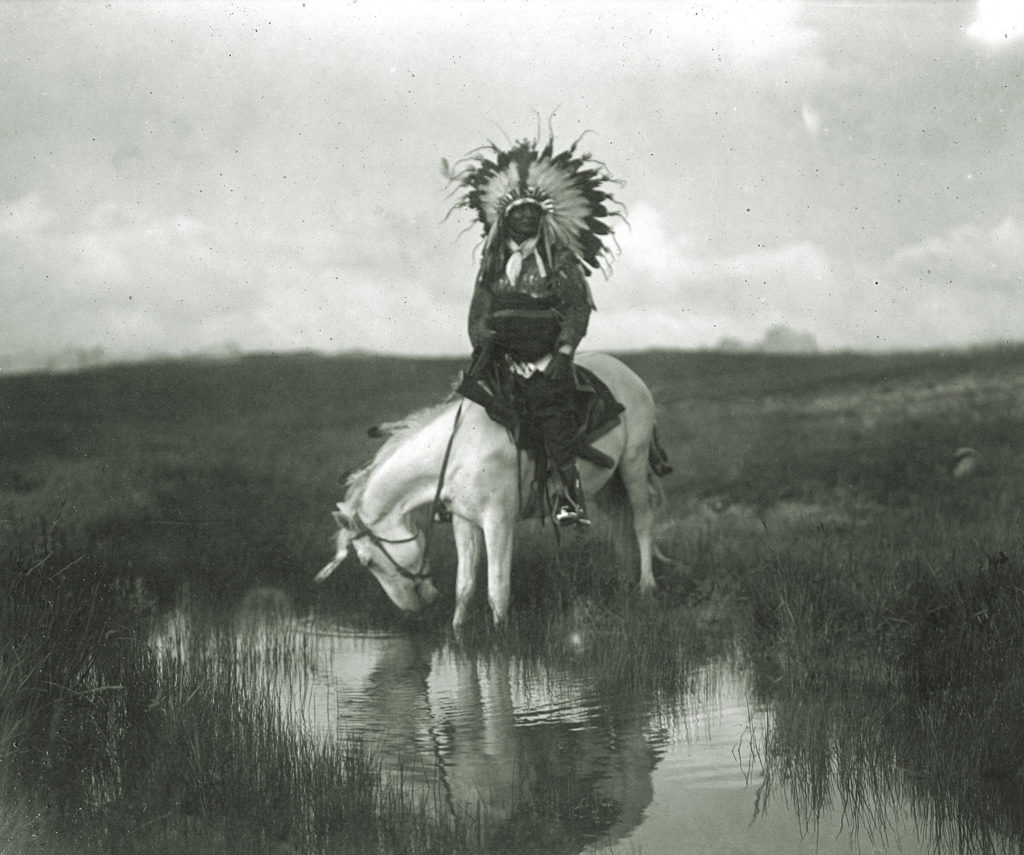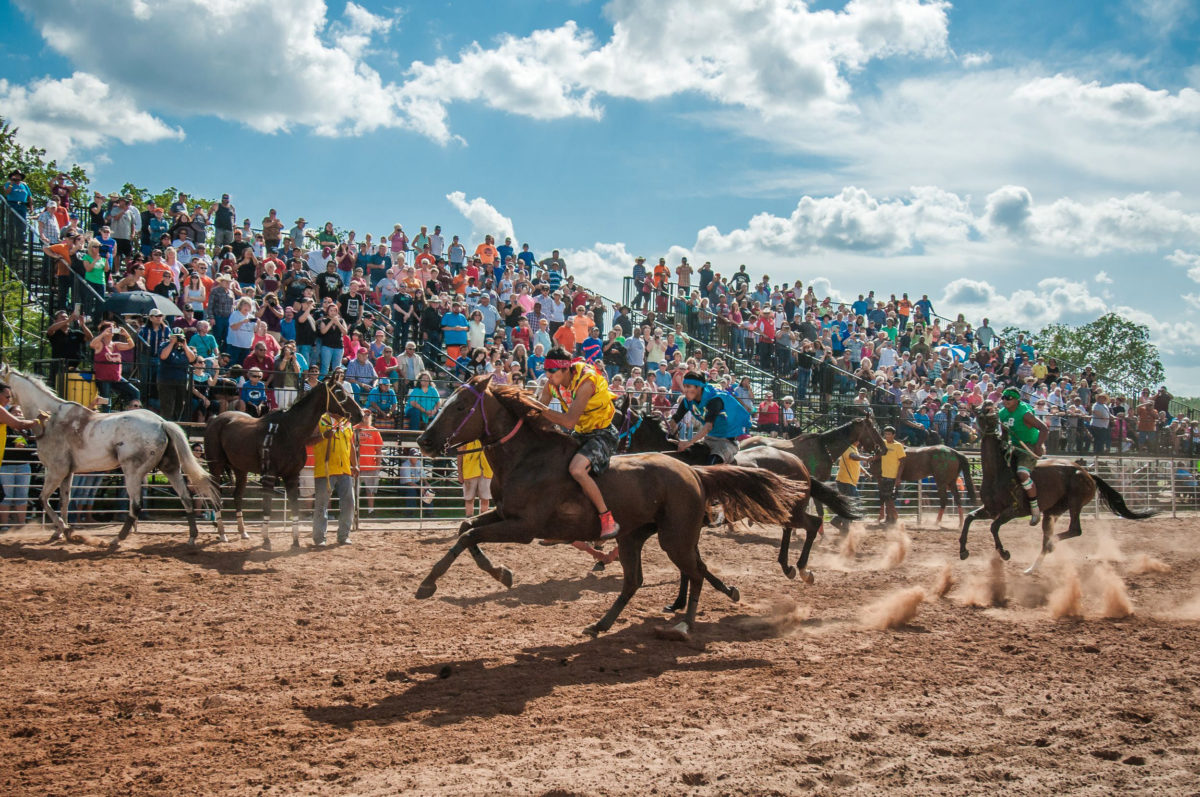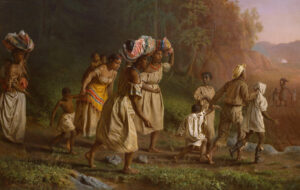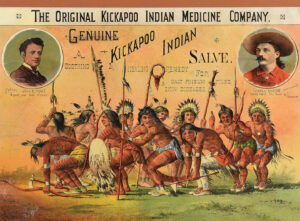The Cheyenne hunter’s horse kicked clods of earth skyward as the warrior drove hard alongside the buffalo. Within seconds the experienced hunter let fly several well-placed arrows into the flanks of the charging beast. The shafts sank deep, piercing vital organs and sending the buffalo crashing to the ground. By the time the warrior circled back, his quarry’s labored breathing had ceased.
Such a scenario played out repeatedly on the Great Plains following the introduction of the horse into Cheyenne society, a happenstance that dramatically changed the tribe’s way of life.
When most people think of Plains Indians, what comes to mind are 19th century Cheyenne and Lakota warriors riding hard across open grasslands to bring down their enemies, either bluecoats or rival warriors. But for centuries prior neither tribe lived on the plains, nor were they particularly migratory. The Cheyennes originally hailed from the region between the Great Lakes and the Mississippi River headwaters in what today is Minnesota. In the late 1700s, while Anglos in the 13 colonies back East were immersed in a revolution to free themselves from British rule, the Cheyennes were experiencing an upheaval of their own. Theirs was not a martial revolution, however, but one of transportation, sparked by the arrival of the horse on the northern Plains. The Cheyennes in turn are thought to have introduced the horse culture to Lakota bands, perhaps as early as 1730. The horses themselves traced their lineage to those brought to North America by 16th century Spanish explorers.
It isn’t exactly known how the sedentary Cheyenne first acquired horses—perhaps by roping free-roaming animals, in trade with other tribes or when fending off mounted enemies (for more on that subject see “Riding Toward a Blue Vision,” Indian Life, by Lance Nixon, in the February 2019 issue of Wild West). Whatever the scenario, it came as a godsend to the Cheyennes, who had begun to migrate west under pressure from other tribes.
Prior to the introduction of the horse the Cheyenne and other tribes were limited in how and where they could hunt buffalo. The surest method was to drive the great herds en masse to their deaths over steep cliffs known as “buffalo jumps” (for more on that mode of hunting see “Jumping Buffalo,” by Todd J. Kristensen and Michael Donnelly, in the April 2018 issue of Wild West). Once they were mounted, Cheyennes could achieve kills anywhere the buffalo roamed.
The average Cheyenne family of the plains numbered eight individuals and possessed 10 or more horses. While that may seem extraneous to a modern-day two-car family, the Cheyennes needed every mount in their remuda. One horse would carry the heavy buffalo hide lodge cover; another two would lug the lodgepoles; two others would serve as pack animals, carrying victuals and sundry camp items; three ridden by women would drag travois on which the children rode; and the final two were held in reserve as reliable buffalo-hunting horses. A family might also own draft horses or mules.
The Cheyennes bred light riding horses just over 14 hands high (roughly 4 ½ feet) at the withers, typically paints with patchwork coats of black or brown on white. The men and boys of the tribe reserved the swiftest stallions and geldings for the hunts. Horses were set out to graze, never hobbled or tethered. Riders forged exceptional bonds with their ponies, as a rule treating them kindly, though captured horses reportedly received no such consideration.
Cheyennes living between the Platte and Arkansas rivers plied an especially profitable trade in stolen Mexican and Spanish horses. They also bartered with white traders, exchanging buffalo hides for rifles and ammunition. But that relationship changed with the influx of settlers. Emigrant trails and trade routes interrupted the buffalo ranges, while an uptick in the killing of the woolly beasts by sport hunters and Indians trying to fill orders for Eastern buyers decimated the herds. Between 1872 and ’82 the measure of buffalo hides sent eastward reached 1 million a year, leaving the prairies littered with bleached bones. Infighting among tribes over the extents of hunting grounds and increasingly hostile interactions between Indians and interlopers raised tensions on the plains.
By the mid-1800s the Cheyennes were justly esteemed for their horsemanship. An experienced rider could remain astride his pony yet keep both hands free to let loose arrows or fire a carbine. Bands of such adept Cheyenne warriors raised havoc, attacking settlers’ cabins, railroad camps and passing emigrant wagon trains alike, leaving dead in their wake, running off cattle and horses, and absconding with newly acquired mounts and other plunder. When the outcry grew loud enough to bring the muscle of the U.S. Army into play, the Cheyenne raiders were usually able to elude their bluecoat attackers. A notable exception came on July 11, 1869, at Summit Springs, Colo., when a punitive expedition of 5th U.S. Cavalry troopers, with a young Bill Cody and 50 Pawnees serving as scouts, thundered into Chief Tall Bull’s village and dealt a blow to the Cheyennes. By then the tribe had sundered in two. The Northern Cheyennes were ultimately fated to reservation life in Montana Territory, while the Southern Cheyennes and their Southern Arapaho confederates were destined for confinement in Indian Territory (present-day Oklahoma). Before that happened, however, the Northern Cheyennes and their Lakota allies waged the Great Sioux War of 1876, culminating with the defeat of Lt. Col. George Armstrong’s 7th U.S. Cavalry command on Montana Territory’s Little Bighorn River that June 25–26.

Echoes of the horse culture reverberate in Cheyenne art. Tribal ledger art from the period prominently feature men and mounts alike dressed and painted for warfare, though some works depict more peaceful pursuits, including one in which a mounted Cheyenne courts a woman.
In the end, neither their riding skills nor the great herds of ponies they accumulated could save the Cheyennes from the seemingly ceaseless influx of settlers. The nomadic lifestyle made possible by the horse reverted to a pedestrian one lived within the confines of the reservations.
The Cheyennes’ love affair with the horse did not end there, however. Right up till present tribal members have displayed their horsemanship in fairs, rodeos and the like. Wallace Bearchum, tribal services director for the Northern Cheyenne, points to several annual events that center on equine competition, including the Fourth of July Rodeo, in Lame Deer, Mont.; the Little Bighorn Memorial Ride, near that southeastern Montana battlefield; the Cody Stampede; and the World Championship Indian Relay in Sheridan, Wyo. In 2016 Linwood Hisbadhorse, a Northern Cheyenne from Lame Deer, helped coordinate the inaugural Ioway Invitational Indian Relay Race, in Perkins, Okla., and his team remains among the most celebrated Indian relay teams in the country. Seems natural, as the champion rider is simply keeping up a time-honored tribal tradition.






